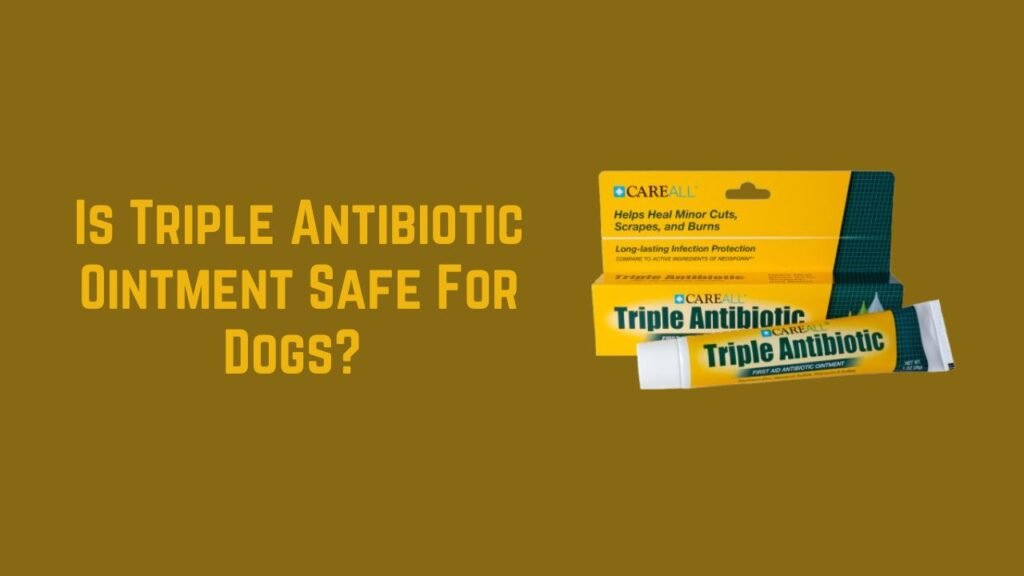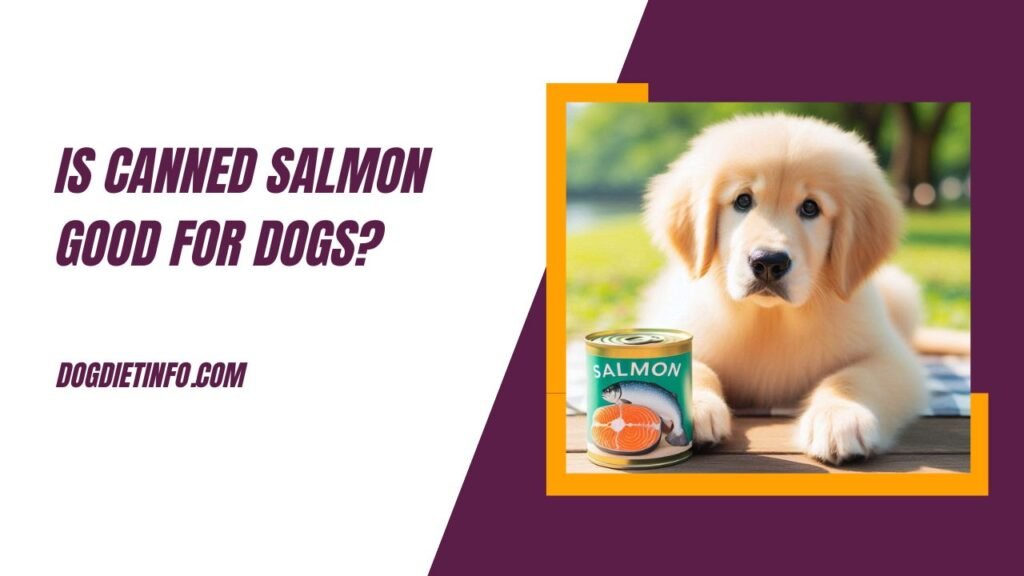Is Triple Antibiotic Ointment Safe For Dogs? Triple Antibiotic Ointment (Neosporin) is generally safe for dogs in small amounts, but it can cause allergic reactions or digestive issues if ingested.
As a dog owner, you want to do everything possible to care for your furry friend, and sometimes that means reaching for products you already have in your home.
It is normal to question whether you can use your usual first aid supplies on your dog when they sustain a little cut or scratch. Triple Antibiotic Ointment, sometimes referred to as Neosporin, is a typical product that many pet owners may take into consideration.
While this ointment is a staple in many human medicine cabinets for treating small wounds, it’s important to consider whether it’s safe for dogs.
In this article, we’ll dive deep into whether Triple Antibiotic Ointment is safe for your dog, the potential risks involved, how to apply it correctly, and some safer alternatives.
Contents
- 1 What Is Triple Antibiotic Ointment?
- 2 Is Triple Antibiotic Ointment Safe for Dogs?
- 3 Potential Risks and Side Effects of Triple Antibiotic Ointment
- 4 How to Safely Use Triple Antibiotic Ointment on Dogs
- 5 Dog Triple Antibiotic Ointment Substitutes
- 6 Conclusion: Is Triple Antibiotic Ointment Safe For Dogs?
What Is Triple Antibiotic Ointment?
Triple Antibiotic Ointment is a topical medication that combines three active ingredients to fight infection: Bacitracin, Neomycin, and Polymyxin B.
It is typically used to treat minor cuts, scrapes, and burns in humans. Here’s a breakdown of the three ingredients:
- Bacitracin: This antibiotic is effective against a variety of bacterial infections by preventing the bacteria from growing and spreading. Bacitracin is commonly used in ointments designed for skin infections and is generally considered safe for use on humans and pets alike.
- Neomycin: A broad-spectrum antibiotic that targets various types of bacteria, Neomycin is also commonly used in human topical products. However, it is known to cause potential toxicity issues in certain animals, particularly in cases of overuse or ingestion.
- Polymyxin B: This antibiotic also helps prevent bacterial growth, targeting bacteria like E. coli and other Gram-negative organisms. Like Bacitracin, it’s generally safe for dogs in small amounts and when applied topically.
While Triple Antibiotic Ointment works well for humans, using it on dogs comes with some considerations. Although some ingredients are considered safe for dogs, others may pose risks if not used properly.
Is Triple Antibiotic Ointment Safe for Dogs?
The Short Answer: Triple Antibiotic Ointment is safe for dogs in small quantities and when used with caution, but it’s essential to be aware of potential risks.
Not all ingredients in this ointment are equally safe for dogs, and misuse or overuse can lead to complications.
- Bacitracin and Polymyxin B are generally safe for dogs. They are both commonly found in veterinary-approved topical ointments and are used to treat infections without major issues. These ingredients work well to prevent bacterial infections from worsening, which is critical for proper wound healing.
- Neomycin, however, can cause problems. It has been linked to toxicity, especially if ingested in large amounts. Neomycin can also be harmful to your dog’s hearing if it enters the bloodstream in high quantities. Therefore, it’s best to use this ointment sparingly and avoid applying it on large open wounds where it might be absorbed into the bloodstream.
Potential Risks and Side Effects of Triple Antibiotic Ointment
As much as Triple Antibiotic Ointment can help treat minor wounds in humans, there are several potential risks and side effects to keep in mind when using it on dogs.
Allergic Reactions
Dogs, like humans, can have allergic reactions to certain ingredients. Although it’s not very common, some dogs may develop skin reactions such as redness, swelling, or itching after applying Triple Antibiotic Ointment.
If you notice any of these symptoms, it’s important to stop using the ointment immediately and consult your veterinarian for further guidance.
Gastrointestinal Issues
One of the primary risks of using Triple Antibiotic Ointment on dogs is the possibility of them licking the ointment off the wound and ingesting it.
If your dog ingests the ointment, it can lead to gastrointestinal upset, such as vomiting or diarrhea. In some cases, excessive ingestion can cause more serious complications.
To avoid this, make sure to closely monitor your dog after applying the ointment and prevent them from licking it off.
Toxicity Risks
As mentioned earlier, Neomycin can be toxic if absorbed into the bloodstream in large amounts. This is more of a concern if the ointment is applied to a large area of the skin, especially if the dog is allowed to lick the area.
Repeated applications or excessive use could lead to more severe issues, including hearing loss or kidney problems in rare cases.
This is why it’s essential to only use small amounts and seek professional advice if you’re unsure. [Is Triple Antibiotic Ointment Safe For Dogs?]
Skin Irritation
Another possible side effect is skin irritation, especially if the ointment is applied too often or in large amounts.
Some dogs may have sensitive skin, and applying an ointment designed for humans may cause further irritation or even a rash.
If you see any signs of irritation, it’s best to discontinue use and contact your veterinarian for advice. [Is Triple Antibiotic Ointment Safe For Dogs?]
How to Safely Use Triple Antibiotic Ointment on Dogs
If you choose to use Triple Antibiotic Ointment on your dog, it’s important to follow certain steps to minimize the risks and ensure that it’s applied correctly. Here’s a guide to using the ointment safely:
1. Clean the Wound
Before applying any ointment, make sure the wound is clean and free from dirt or debris. Use warm water and a mild, pet-safe soap to gently clean the area. Avoid using harsh chemicals or alcohol, as these can further irritate the wound. [Is Triple Antibiotic Ointment Safe For Dogs?]
2. Apply a Thin Layer
When applying the ointment, use only a small amount. A thin layer is sufficient to protect the wound and prevent bacterial growth. Applying too much ointment can lead to complications and may also increase the likelihood of your dog licking it off.
3. Prevent Licking and Ingestion
One of the biggest concerns with using Triple Antibiotic Ointment on dogs is that they may lick the ointment off.
To prevent this, you may need to keep your dog distracted or use an Elizabethan collar (cone) to stop them from reaching the wound.
Licking the ointment off can lead to gastrointestinal issues or toxicity, so it’s essential to ensure your dog doesn’t ingest it. [Is Triple Antibiotic Ointment Safe For Dogs?]
4. Monitor the Wound
After applying the ointment, keep an eye on the wound to see if it improves. If there are any signs of infection (such as increased redness, swelling, or discharge), or if your dog seems to be in pain, consult your vet. If the wound doesn’t seem to heal within a few days, it may be time for professional intervention.
5. Consult a Veterinarian
If you are unsure whether Triple Antibiotic Ointment is the best option for your dog’s wound, it’s always safest to consult your veterinarian. Your vet can provide tailored advice based on your dog’s health history and the type of injury. [Is Triple Antibiotic Ointment Safe For Dogs?]
Dog Triple Antibiotic Ointment Substitutes
If you’re concerned about the risks of using Triple Antibiotic Ointment on your dog, there are several safer alternatives. Here are some options that are specifically designed for dogs:
1. Veterinary-Approved Ointments
There are many topical medications formulated for pets, including antibiotic ointments that are specifically designed to be safe for dogs. These products are free of potentially harmful ingredients like Neomycin and are less likely to cause irritation or toxicity.
2. Natural Remedies
If you prefer to use natural products, several remedies are safe and effective for treating minor wounds in dogs. Aloe vera gel and coconut oil both have healing properties and are generally safe when used topically. Aloe vera is soothing for irritated skin, while coconut oil can act as a mild antimicrobial agent. [Is Triple Antibiotic Ointment Safe For Dogs?]
3. Honey
Medical-grade honey, such as Manuka honey, is a natural alternative to antibiotic ointments. It has potent antibacterial properties and can help promote healing. Honey is safe for dogs and can be applied directly to the wound.
4. Saline Solution
A simple saline solution (saltwater) can help cleanse the wound without irritating it. It’s a gentle option that can be used to flush out debris and bacteria from minor cuts and scrapes. [Is Triple Antibiotic Ointment Safe For Dogs?]
See Also: Is Spectra 10 Safe For Pregnant Dogs?
Conclusion: Is Triple Antibiotic Ointment Safe For Dogs?
Triple Antibiotic Ointment can be safe for dogs in small quantities and when used correctly, but it comes with some risks.
The main concern is the Neomycin, which can cause toxicity if ingested or absorbed in large amounts. If you choose to use Triple Antibiotic Ointment on your dog, apply it sparingly, monitor for signs of adverse reactions, and prevent your dog from licking it off.
If in doubt, consult your veterinarian for advice or use veterinary-approved ointments designed specifically for dogs. [Is Triple Antibiotic Ointment Safe For Dogs?]
Your dog’s health is important, and with the right care and attention, you can help them heal safely and comfortably.
By following these guidelines, you can provide your dog with the best care possible, ensuring their minor injuries are treated properly while minimizing any potential risks.
References:
American Kennel Club (AKC). “Is Neosporin Safe for Dogs?” akc.org
The Spruce Pets. “Is Neosporin Safe in Dogs?” thesprucepets.com
Dogster. “Can You Put Neosporin on a Dog?” dogster.com
Great Pet Care. “Is Neosporin Safe for Dogs?” greatpetcare.com
Trupanion. “Neosporin for Dogs: Is It Safe?” trupanion.com

Derrick Wilcox is a certified canine behaviorist with over 12 years of experience at Happy Paws Animal Clinic and Pawsitive Training Center, helping pet owners ensure safer, healthier, and happier lives for their dogs.



